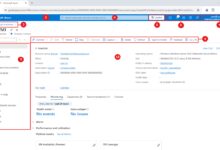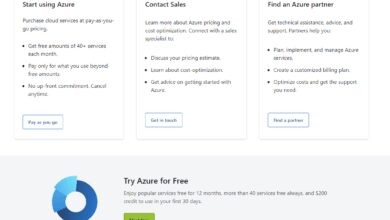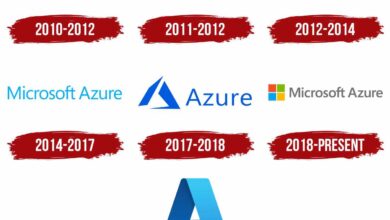Azure Apps: 7 Powerful Benefits You Can’t Ignore
Ever wondered how top companies deploy apps seamlessly across the globe? The secret often lies in Azure apps—Microsoft’s cloud-powered solution for building, managing, and scaling applications with unmatched flexibility and security.
What Are Azure Apps and Why They Matter

Azure apps refer to a broad category of application services offered by Microsoft Azure, a leading cloud computing platform. These services empower developers and businesses to build, deploy, and manage applications through a scalable, secure, and globally available infrastructure. Whether you’re running a small web app or orchestrating a complex microservices architecture, Azure apps provide the tools and environment to make it happen.
Defining Azure Apps in Modern Development
Azure apps aren’t just one service—they’re an ecosystem. From App Services to Functions, Containers, and Kubernetes, Azure offers a suite of tools that cater to various development needs. The term ‘Azure apps’ generally encompasses any application hosted or managed using Azure’s application-centric services.
- Azure App Service for web and mobile apps
- Azure Functions for serverless computing
- Azure Kubernetes Service (AKS) for container orchestration
These components allow developers to focus on writing code rather than managing infrastructure, accelerating time-to-market and reducing operational overhead.
Core Components of Azure App Ecosystem
The backbone of Azure apps lies in its modular services. Each service is designed to handle specific application requirements, enabling a mix-and-match approach for optimal performance and cost-efficiency.
- Azure App Service: A fully managed platform for building web, mobile, and API apps. Supports multiple languages including .NET, Java, Node.js, and Python.
- Azure Functions: Enables event-driven, serverless code execution. Ideal for lightweight tasks triggered by HTTP requests, timers, or data changes.
- Azure Logic Apps: Automates workflows by connecting disparate systems and services without writing code.
These services integrate seamlessly with other Azure offerings like Azure Active Directory, Azure Monitor, and Azure DevOps, forming a cohesive development and operations environment.
“Azure App Service allows you to build and deploy web and mobile apps for any platform or device, easily integrating with SaaS and on-premises systems.” — Microsoft Azure Official Documentation
Top 7 Benefits of Using Azure Apps
Organizations worldwide are shifting to Azure apps for compelling reasons. From scalability to security, the advantages are transformative. Let’s explore the seven most impactful benefits that make Azure apps a top choice for modern application development.
1. Global Scalability and High Availability
One of the standout features of Azure apps is their ability to scale instantly across global data centers. Whether you’re experiencing a traffic spike or planning for seasonal demand, Azure apps can automatically scale up or out based on real-time metrics.
- Auto-scaling rules can be set based on CPU, memory, or request rates.
- Geographic redundancy ensures high availability even during regional outages.
- Integration with Azure Traffic Manager enables intelligent load distribution across regions.
This global reach is critical for businesses targeting international markets. For example, a retail app using Azure App Service can handle Black Friday traffic from North America, Europe, and Asia simultaneously without downtime.
2. Cost Efficiency and Pay-as-You-Go Model
Azure apps operate on a consumption-based pricing model, meaning you only pay for what you use. This is especially beneficial for startups and SMEs that want to avoid large upfront infrastructure costs.
- No need to invest in physical servers or data centers.
- Serverless options like Azure Functions charge per execution, reducing idle costs.
- Reserved instances and hybrid benefits offer discounts for long-term commitments.
According to a Microsoft Azure Pricing Calculator, companies can save up to 60% compared to traditional on-premises setups when leveraging Azure’s flexible pricing and automation tools.
3. Built-in Security and Compliance
Security is not an afterthought in Azure apps—it’s embedded into the platform. Microsoft invests over $1 billion annually in cybersecurity and employs more than 3,500 security experts to protect its cloud infrastructure.
- Azure apps come with built-in DDoS protection, network security groups, and encryption at rest and in transit.
- Compliance with standards like GDPR, HIPAA, ISO 27001, and SOC 2 ensures regulatory readiness.
- Integration with Azure Active Directory enables robust identity and access management.
For industries like healthcare and finance, where data sensitivity is high, Azure apps provide a trusted environment that meets stringent compliance requirements.
4. Rapid Development and DevOps Integration
Azure apps streamline the software development lifecycle. With native integration with Azure DevOps, GitHub Actions, and CI/CD pipelines, teams can automate testing, deployment, and monitoring.
- One-click deployment from GitHub or Azure Repos.
- Staging slots allow safe testing of new versions before going live.
- Blue-green deployments minimize downtime during updates.
This agility allows development teams to release features faster and respond to market changes with precision. A study by Forrester found that organizations using Azure DevOps reduced deployment times by 50% on average.
5. Support for Multiple Programming Languages and Frameworks
Unlike some cloud platforms that favor specific tech stacks, Azure apps support a wide range of languages and frameworks. This flexibility makes it ideal for polyglot development environments.
- Full support for .NET, Java, Node.js, Python, PHP, and Ruby.
- Custom container support allows deployment of any language or framework.
- Pre-configured development environments in Visual Studio and VS Code.
Whether your team uses legacy .NET applications or modern React frontends with Node.js backends, Azure apps provide a consistent deployment experience.
6. Seamless Integration with Third-Party Services
Azure apps excel at connecting with external systems. Through Azure Logic Apps and API Management, you can integrate with SaaS platforms like Salesforce, Slack, and Google Workspace without writing complex middleware.
- Pre-built connectors for over 300 services.
- API gateways manage traffic, enforce policies, and provide analytics.
- Event Grid enables real-time event routing between services.
This integration capability is a game-changer for digital transformation projects. For instance, a logistics company can use Azure Logic Apps to sync shipment data from SAP to a custom tracking portal in real time.
7. AI and Machine Learning Capabilities
What sets Azure apps apart is their native access to AI and machine learning tools. Developers can embed cognitive services like vision, speech, and language understanding directly into their applications.
- Azure Cognitive Services APIs can be called directly from Azure apps.
- Model deployment via Azure Machine Learning simplifies AI integration.
- Pre-trained models reduce development time for common AI tasks.
A customer service app, for example, can use Azure’s Text Analytics to detect sentiment in user feedback and trigger automated responses—enhancing user experience without human intervention.
How to Get Started with Azure Apps
Starting with Azure apps doesn’t require a massive team or budget. Microsoft provides a free tier, extensive documentation, and hands-on labs to help beginners get up to speed quickly.
Step 1: Set Up an Azure Account
The first step is creating an Azure account. You can sign up at azure.microsoft.com/free and get $200 in credits for 30 days, plus access to over 25 always-free services.
- Choose between pay-as-you-go, free, or enterprise subscription models.
- Verify your identity with a credit card (no charges unless you upgrade).
- Access the Azure portal at portal.azure.com.
Once your account is active, you can start deploying your first app within minutes.
Step 2: Deploy Your First Web App
Azure App Service makes deploying a web app straightforward. Here’s a quick walkthrough:
- In the Azure portal, search for ‘App Service’ and click ‘Create’.
- Choose your subscription, resource group, and region.
- Select a runtime stack (e.g., .NET, Node.js).
- Deploy code from local Git, GitHub, or a ZIP file.
Within minutes, your app will be live with a default azurewebsites.net URL. You can then customize the domain, enable HTTPS, and set up monitoring.
Step 3: Monitor and Optimize Performance
After deployment, use Azure Monitor and Application Insights to track app health, response times, and error rates.
- Set up alerts for CPU usage, memory, or failed requests.
- Use logs and metrics to identify performance bottlenecks.
- Enable auto-scaling based on observed traffic patterns.
These tools provide real-time visibility, helping you maintain optimal performance and user satisfaction.
Real-World Use Cases of Azure Apps
Azure apps are not just theoretical—they’re powering real businesses across industries. Let’s look at how different sectors are leveraging Azure apps to solve real problems.
E-Commerce: Scaling During Peak Seasons
An online retailer faced massive traffic spikes during holiday sales. By migrating to Azure App Service with auto-scaling and Azure CDN, they handled 10x normal traffic without downtime. The result? A 30% increase in sales and zero customer complaints about site slowness.
Healthcare: Secure Patient Portals
A hospital network built a patient portal using Azure apps, ensuring HIPAA compliance through encrypted storage and role-based access control. Integration with Azure AD allowed secure single sign-on, while Azure Functions processed appointment reminders and lab results automatically.
Manufacturing: IoT-Driven Predictive Maintenance
A manufacturing firm used Azure IoT Hub and Azure Functions to collect sensor data from machines. Azure apps processed this data in real time, predicting equipment failures before they occurred—reducing downtime by 40% and saving millions annually.
Common Challenges and How to Overcome Them
While Azure apps offer immense benefits, users may encounter challenges, especially during migration or complex deployments.
Challenge 1: Complexity in Configuration
New users often find the Azure portal overwhelming due to the sheer number of options and services. This can lead to misconfigurations or suboptimal setups.
- Solution: Start with Azure Advisor, which provides personalized recommendations for cost, performance, and security.
- Use Azure Blueprints to deploy pre-configured, compliant environments.
- Leverage Quickstart templates from Azure Quickstart Templates to accelerate deployment.
Challenge 2: Cost Management
Without proper monitoring, cloud costs can spiral. Auto-scaling and unused resources can lead to unexpected bills.
- Solution: Use Azure Cost Management + Billing to track spending by service, resource, or team.
- Set up budget alerts and enforce tagging policies for accountability.
- Shut down non-production environments during off-hours.
Challenge 3: Vendor Lock-In Concerns
Some organizations worry about becoming too dependent on Microsoft’s ecosystem.
- Solution: Use containerization (Docker) and Kubernetes (AKS) to maintain portability.
- Adopt infrastructure-as-code tools like Terraform or Bicep for multi-cloud compatibility.
- Design APIs with open standards to ease future migrations.
Future Trends in Azure Apps Development
The landscape of cloud application development is evolving rapidly. Azure apps are at the forefront of several emerging trends that will shape the next decade of software.
Edge Computing and Azure IoT Edge
As latency-sensitive applications grow (e.g., autonomous vehicles, AR/VR), processing data closer to the source becomes critical. Azure IoT Edge allows Azure apps to run on edge devices, bringing cloud intelligence to the physical world.
- Run Azure Functions or machine learning models directly on edge devices.
- Synchronize data with the cloud when connectivity is available.
- Reduce bandwidth costs and improve response times.
This hybrid approach is transforming industries like retail, where smart shelves use edge computing to track inventory in real time.
AI-Powered Development Tools
Microsoft is integrating AI into the development process itself. GitHub Copilot, powered by Azure, suggests code in real time, reducing boilerplate and accelerating development.
- AI-assisted debugging and performance tuning.
- Natural language to code generation (e.g., describe a function, get code).
- Predictive scaling based on historical usage patterns.
These tools are making Azure apps not just a deployment platform, but an intelligent development partner.
Sustainability and Green Cloud Computing
Microsoft has committed to being carbon negative by 2030. Azure apps contribute by optimizing resource usage and enabling energy-efficient architectures.
- Right-sizing recommendations reduce over-provisioning.
- Renewable energy powers Azure data centers in over 60 regions.
- Carbon-aware scheduling can run workloads during low-carbon energy periods.
For environmentally conscious organizations, Azure apps offer a path to sustainable digital transformation.
Best Practices for Maximizing Azure Apps Performance
To get the most out of Azure apps, follow these proven best practices that top engineering teams use.
Use Resource Groups and Tags Strategically
Organize your Azure resources using logical resource groups (e.g., by project, environment, or department). Apply tags for cost tracking, ownership, and automation.
- Tag examples: Environment=Production, Owner=DevTeamA, CostCenter=Marketing.
- Use tags in cost reports and automation scripts.
- Avoid overly complex tagging schemes that are hard to maintain.
Enable Continuous Monitoring and Alerts
Don’t wait for users to report issues. Proactively monitor your Azure apps with Application Insights and Azure Monitor.
- Set up alerts for 5xx errors, slow response times, or high CPU.
- Use dashboards to visualize key metrics across services.
- Integrate with Slack or Teams for real-time notifications.
Leverage Deployment Slots for Zero-Downtime Updates
Azure App Service supports deployment slots (e.g., staging, production). Deploy new versions to a staging slot, test thoroughly, then swap with production—ensuring zero downtime.
- Use slot-specific settings for database connections or API keys.
- Automate swaps using CI/CD pipelines.
- Warm up the app before swapping to prevent cold-start delays.
What are Azure apps?
Azure apps refer to a suite of cloud-based services provided by Microsoft Azure for building, deploying, and managing applications. This includes App Service, Functions, Logic Apps, and containerized solutions, all designed to support scalable, secure, and efficient application development.
How much does Azure App Service cost?
Azure App Service offers a free tier for basic use and multiple paid tiers based on performance and features. Pricing varies by instance size, region, and usage. You can use the Azure pricing calculator to estimate costs based on your needs.
Can I deploy custom containers in Azure apps?
Yes, Azure App Service supports custom Docker containers, allowing you to deploy apps built with any language, framework, or version. You can host images from Azure Container Registry, Docker Hub, or private registries.
Is Azure good for serverless computing?
Absolutely. Azure Functions is a fully managed serverless platform that lets you run event-driven code without managing servers. It integrates seamlessly with other Azure services and supports multiple programming languages.
How do I secure my Azure apps?
Security can be enhanced by using Azure Active Directory for authentication, enabling HTTPS, configuring network security groups, encrypting data, and applying role-based access control (RBAC). Regularly apply updates and follow the Azure Security Benchmark.
Microsoft Azure apps have redefined how businesses develop and deploy software. From unmatched scalability and security to AI integration and global reach, Azure apps offer a comprehensive platform for modern application needs. Whether you’re a startup or an enterprise, leveraging Azure apps can accelerate innovation, reduce costs, and future-proof your digital strategy. By following best practices and staying updated with emerging trends, organizations can fully harness the power of Azure to build resilient, intelligent, and scalable applications.
Further Reading:









